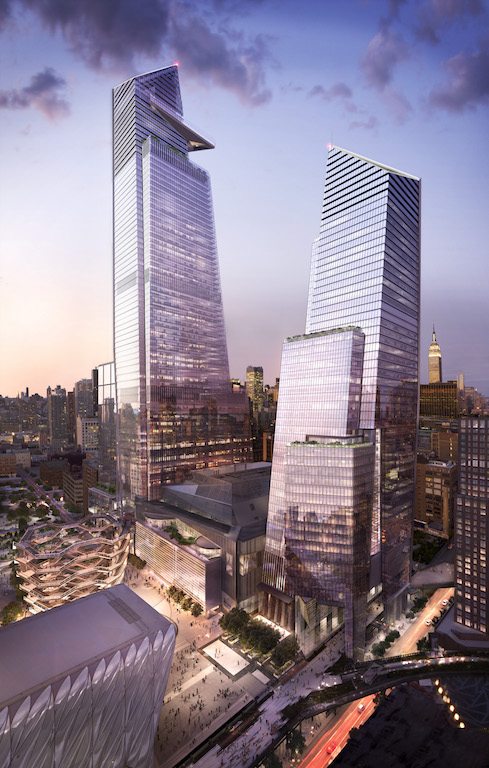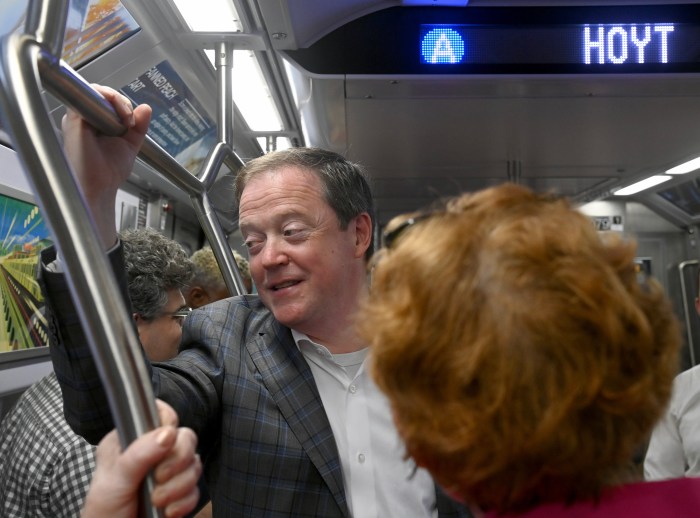BY MATTHEW SZULMAN | New York is famously known for its fast-changing landscape, and the newly reinvented Hudson Yards, located in Midtown Manhattan, is no exception. After a few short years of planning and construction, Hudson Yards is up and running.
New Yorkers with deep, eight-figure pockets can finally find their dream one-bedroom for a cool $4.3 million. Penthouses go for up to $32 million to buy, and if you’re inclined to rent, a two-bedroom apartment goes for $9,000 a month.
But what makes this different from other billionaire enclaves?

For starters, $25 billion — including $6 billion in tax breaks and government assistance — was allocated to create this city-within-a-city. Along with being nicknamed the “New West Side,” Hudson Yards has developed itself into the 1%’s Fortress of Solitude. The other 99% are free to wander around the streets — gaping and gazing in wonder at the beauty of it all.
The way we view safety and climate in recent years has given rise to how city planners build their cities, forcing designers to create more intricate ways of shielding the public from manmade and natural disasters. In the case of Hudson Yards, changes aren’t cosmetic; rather, they are infrastructural.
The ones responsible for these dramatic changes are Kohn Pedersen Fox Associates (KPF), the architecture firm that oversaw the project, and designer Thomas Heatherwick, who prioritized safety above all else for its wealthy tenants. Designed to be virtually impenetrable, the neighborhood is expertly crafted to ward off superstorms and terrorist attacks.
Engineers of Hudson Yards wanted the complex to be adequately prepared in diverting every conceivable issue their buildings could run into. This includes an intricate electrical system that could still operate during a city blackout, as well as an internal rainwater collection system that can gather and redirect water accumulated during floods to avoid property damage.
Superstorm Sandy in 2012 caused tenants and property buyers in Manhattan to be more cautious about where they rent and own their retail spaces and homes. Hudson Yards’ architects are well aware of this concern and, therefore, built their mechanical systems on higher floors. And they installed stormproof submarine doors that can be sealed to stave off the aforementioned flood damage.
Starting to sound vaguely familiar? Sounds like a giant panic room, no? It’s not your average apartment complex, no matter what angle you look at it from.
Hudson Yards includes its own private power plant, so office lights and computers can remain on even during a city outage. The buildings themselves have been built several stories aboveground and sea level, significantly mitigating flood risks.
Hmm…self-contained apartments above sea level that only the superrich can access and be safe in from any impending doom… .
Again, not to get too nervous about this, but do “The Planners” know something that we don’t? Are they foreseeing imminent climate changes and impending attacks?
The makers of Hudson Yards are at least doing one thing right by striving toward environmental protection. Waste chutes are installed in the development’s residential buildings that separate occupants’ trash, recyclables and organic waste, and its kitchens are equipped with choppers and grinders to further reduce food waste.
Conspiracy theories aside, Heatherwick and his team understand how human waste and garbage are jeopardizing our environment, so they’re presenting themselves as a beacon of hope by having separate receptacles for refuse.
However, in multibillion-dollar-funded projects like Hudson Yards, a “panic room” of sorts can help ensure that the inhabitants — the very rich and elite inhabitants — of the development are completely safe from whatever man or nature throws at them.
Perhaps the city’s wealthy are holding their cards close to their chest and are going into survival mode. Their response to a potential apocalypse is a sad-but-true reminder that those with deep pockets can avert disaster while everyone else is left to fend for themselves.
Szulman is a Brooklyn resident and P.R./content coordinator at Passfeed, an online social shopping app.

















